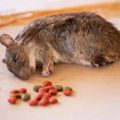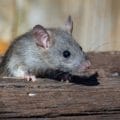Table of Contents
If you have a rat problem and are looking for ways to deal with the issue in a way that is safe and inexpensive then it makes sense to use some homemade rat poison and mouse poison that you can make from everyday items in your house. Get rid of mice and rats with these potential rodent poisons that work!
I did some research to discover which of the most popular DIY poisons (Baking Soda, Plaster of Paris, Salt, etc) were the most likely to actually kill a rat and came up with a few winners and a lot of losers.
Before we jump into all of the homemade rat killer options it is important that we have a baseline for comparison. Many commercial rat poisons are based on a drug called Warfarin which is a blood thinner that causes rats to die from internal bleeding. Warfarin is HIGHLY effective at killing rats.
It turns out that the toxicity of most chemicals towards rats has been scientifically determined and is included in their Material Safety Data Sheets. Below is the toxicity data towards rats for Warfarin that is included in its Material Safety Data Sheet
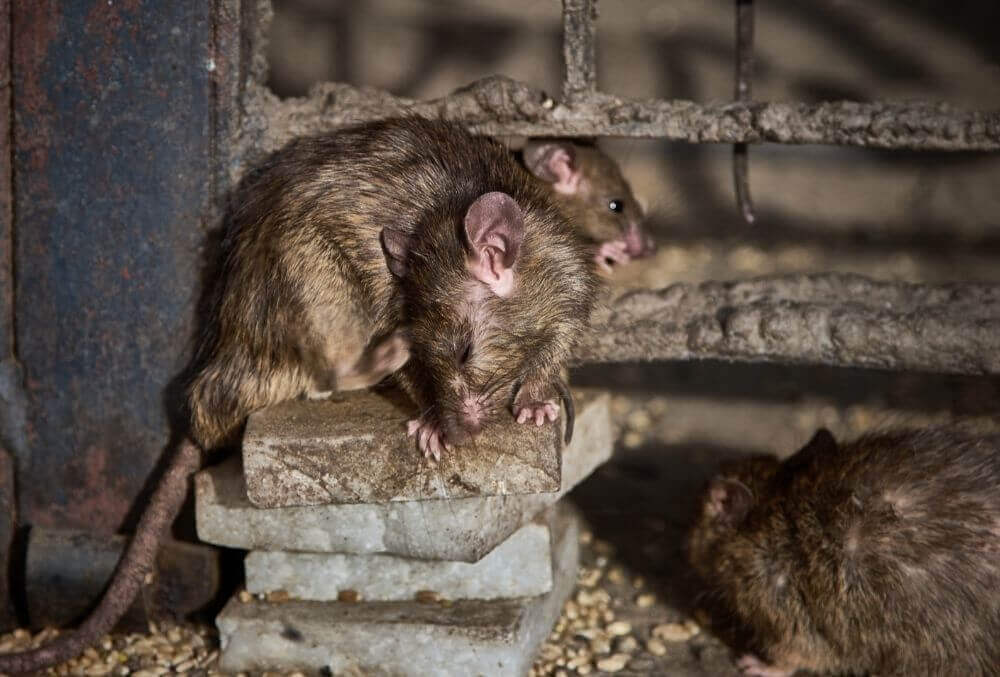
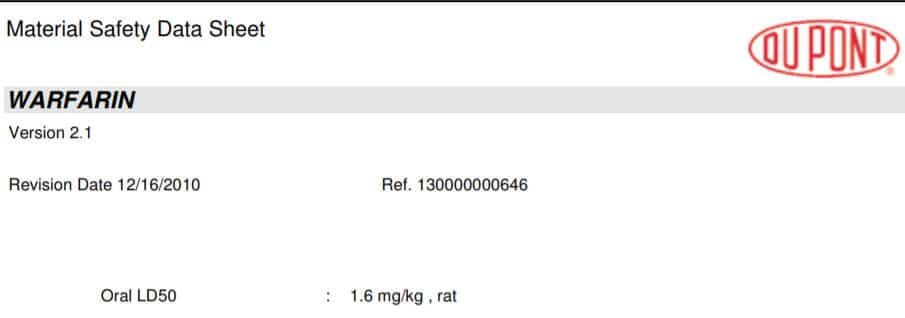
The term “LD50” refers to the Lethal Dose for 50% of a rat population. So, if you had 100 rats that weighed a kilogram each and they all consumed 1.6 milligrams of Warfarin then about 50 of them would die.
Don’t get too caught up in the math or the technical terms. I just wanted you to have a reference point to know that, very roughly, “1.6 milligrams” is how much of a GREAT rat poison you need to kill a rat.
Now, let’s see how the homemade options stack up!.
Homemade Rat Bait Options
Killing Rats With Baking Soda

To kill rats with baking soda is one of the most popular DIY homemade rat poison options you find on the Internet. It is cheap, readily available, and safe for children and pets.
The thought behind killing rats with baking soda is based on the idea that rats cannot burp. It is actually sodium bicarbonate and will readily decompose to produce carbon dioxide gas under acidic conditions. So, the rat eats it which then comes into contact with acids in the rat’s stomach. Homemade rat poison baking soda turns into a bunch of gas that the rat can’t expel which somehow then kills that rat.
Let’s look at what the numbers say. Below is the toxicity data for sodium bicarbonate.

The LD50 for this compound is 7.3 grams which is equal to 7,300 milligrams. This means that baking soda rat poison is, roughly, 4,500 times LESS EFFECTIVE than Warfarin for killing rats.
But just because baking soda is less effective than Warfarin does not mean that it doesn’t work. Let’s do a little quick math to figure out if it is a viable rat poison for home use and how long does baking soda poison take to work.
An average adult rat weighs about 275 grams. Using the LD50 information shows that a rat would need to eat (7.3 g/kg) x (.275 kg/rat) = 2 grams to reach the LD50 level.
For those of you that don’t think in terms of grams, a good reference point is that 1/2 of a teaspoon of baking soda weighs 3 grams
So, if you can find a way to get your rats to eat more than a teaspoon of baking soda then you have a good chance of killing them! Here are a couple of homemade pet safe rat poison options to get you started:
Rat & Mouse Poison Recipe #1
- 1/2 Cup Peanut Butter
- 1/4 Cup Baking Soda
- Thoroughly mix the baking soda and peanut butter to achieve a uniform consistency.
Wear gloves and form the mix into small balls about the size of a grape. The gloves are to keep your hands clean and keep your scent off of the bait.
Rat & Mouse Poison Recipe #2
- 1/2 Cup Sugar
- 1/2 Cup Baking Soda
- The sugar and baking soda have different particle sizes and will naturally separate if they are mixed without any further preparation.
To make sure that the ingredients mix well you will need to pulse them in a spice/coffee grinder for about 15-20 seconds to get a uniform particle size distribution.
Scatter the baits in areas where you have seen rat droppings or other signs of rat infestation.If your rats consume enough of these treats they will die in about a day. Homemade rat poison baking soda can take days or weeks to kill the rat, so another important factor is patience.
Killing Rats With Plaster of Paris
Plaster of Paris, also known as gypsum, is primarily composed of the chemical Calcium Sulfate. Plaster of Paris will soak up water to form a moldable paste and then quickly dry.
The thought behind killing rats with Plaster of Paris is that when the rat eats enough the plaster will soak up all of the moisture in the rat’s stomach and then turn into a hard ball that cannot be digested. The rat would die from dehydration or starvation.
The MSDS for calcium sulfate gives an LD50 of 3000 mg/kg making Plaster of Paris 2.4 times more effective than baking soda.
Again, the effectiveness of this rat poison is directly tied to how much of the bait you can get the rats to eat. I would start with the basic recipes given above for baking soda and adjust as needed.
Killing Rats With Salt
I am not completely sure how salt is supposed to kill a rat but I have seen a few forum threads from folks that raise backyard chickens who claim it works.
The MSDS for sodium chloride indicates an LD50 of 3000 mg/kg which would make it just as effective as Plaster of Paris. My main concern is whether or not a rat would sit there and eat so much salt that it killed itself. Wouldn’t it get thirsty first??
The math says that salt should work but rats know what salt is and I doubt they would eat enough to harm themselves.
Killing Rats With Black Pepper
The first time I heard about using black pepper to get rid of mice and rats I thought it was nuts but then I dug a little deeper.
It turns out that black pepper has high levels (4.5 to 9.7 wt%) of a chemical called “piperidine”. The MSDS for piperidine gives an LD50 of 400 mg/kg.
This means that the pepper seed as a whole has a level of toxicity towards rats somewhere between baking soda and Plaster of Paris.
Again, your primary problem with using black pepper as rat poison is getting the rats to eat enough to be effective. As you know, black pepper has a pretty strong flavor, and getting a rat to eat a lot of it might be challenging.
Killing Rats with Aspirin
Now, get rid of mice with this idea that really caught my attention! The active ingredient in aspirin, acetylsalicylic acid, causes many biochemical changes in the body including acting as a blood thinner. The blood thinner part is what caught my attention as that is also the primary function of many commercial rat poisons including Warfarin.
The MSDS for acetylsalicylic acid gives an LD50 of 1,500 mg/kg which makes this look like a promising poison.
However, I think this example shows just how hard it is to get a rat to eat enough homemade rat poison to be effective. If we assume an average rat weighs 275 grams then it would need to consume 412 mg of acetylsalicylic acid to reach the LD50 threshold. Ideally, we would want it to consume more than that.
A single dose of Bayer Extra Strength Aspirin contains 500 mg of acetylsalicylic acid which should be enough to kill an average size rat. How hard is it to get a rat to eat a full dose of an Extra Strength Aspirin??
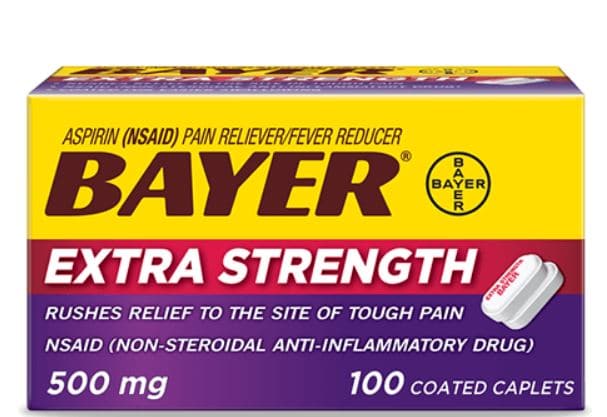
Killing Rats With Vinegar
Vinegar is not a viable rat poison solution.
The compound in vinegar that gives it that flavorful twang is called acetic acid. While acetic acid has an LD50 of 3310 mg/kg it only makes up about 3-5% of vinegar with the rest being water.
In addition to being highly diluted, acetic acid evaporates readily which is why vinegar has such a strong smell.
Basically, the acetic acid in vinegar is a diluted weak poison that will evaporate soon after you place it out for the rats. Take a pass on this one.
Killing Rats with Coke, Pepsi, or Other Carbonated Beverages
This rat poison idea is similar to baking soda in that you are trying to get gas bubbles stuck in the rat’s stomach which it can’t expel through burping.
I have never seen any documentation that this works and can’t imagine how much Coke a rat would have to drink to die from internal carbonation.
I suspect that if you put out a tray of a sugary beverage like Coke then you would actually make the problem worse by attracting more rats.
Killing Rats With Antifreeze
Another craze is the homemade rat poison antifreeze. This one is tricky.
If you know what you are doing then you can absolutely kill rats with antifreeze. And if you know what you are doing then you absolutely should not use this method.
Here are the tricks and problems associated with using antifreeze as a poison.
There are different formulations for antifreeze. In the “old days” antifreeze was made from ethylene glycol. Ethylene glycol has a sweet aroma that attracts animals and is toxic with an LD50 of 4700 mg/kg.
While the LD50 is about the same as the other homemade options in this list the fundamental difference is that rats WANT to drink it. It is easy to get to a lethal dose when the rats are slurping the stuff up.
Unfortunately, rats are not the only animals attracted to ethylene glycol. All animals love this stuff including squirrels, cats, and dogs. In fact, the number of pet poisonings from ethylene glycol-based antifreeze was so great that the industry came up with a new formulation based on propylene glycol (LD50 = 20,000 mg/kg.)
Antifreeze based upon propylene glycol formulations is still toxic but not nearly to the extent as the older ethylene glycol-based products.
Due to the inherent danger of accidental poisonings of pets from antifreeze the ONLY time I would ever consider using it as a poison was when I was dealing with rats in an attic where I KNEW that pets would have zero access to the liquid.
In reality, I wouldn’t even use antifreeze for attic rats because the rats would create an unbearable stench as they slowly decomposed in the hot attic or even in the walls.
No thanks…skip this option.
Killing Rats With Dry Ice
Using dry ice to kill rats is highly effective for the right type of rats.
If you are dealing with burrowing rats like sewer rats then you can place a bunch of dry ice into the opening to their burrow. As the dry ice “melts” it releases clouds of carbon dioxide gas which suffocates the rats.
This technique is most effective if you do it during the day when the nocturnal rats are sleeping in their burrows. This technique is being used by cities like Chicago to combat their rat problems.
This technique will not be useful for dealing with palm rats, roof rats, etc that live in trees and do not have burrows.
Rat Poison: Other Ideas to Consider
A lot of people want to use homemade rodenticides because they do not want the extremely powerful and dangerous commercial rat poisons around their pets or family. They are also hesitant to use traditional rat traps because frankly, they can be terrifying!
Let me give you a few other options to consider in your pursuit to battle your rat infestation.
Pet Safe Rat Poison
RatX is a non-traditional rat poison that is not toxic to pets or humans. The active ingredients in RatX all-natural corn gluten and salt. When the corn gluten is ingested it swells up inside the rat and causes it to die from dehydration. The salt helps with the dehydration process.
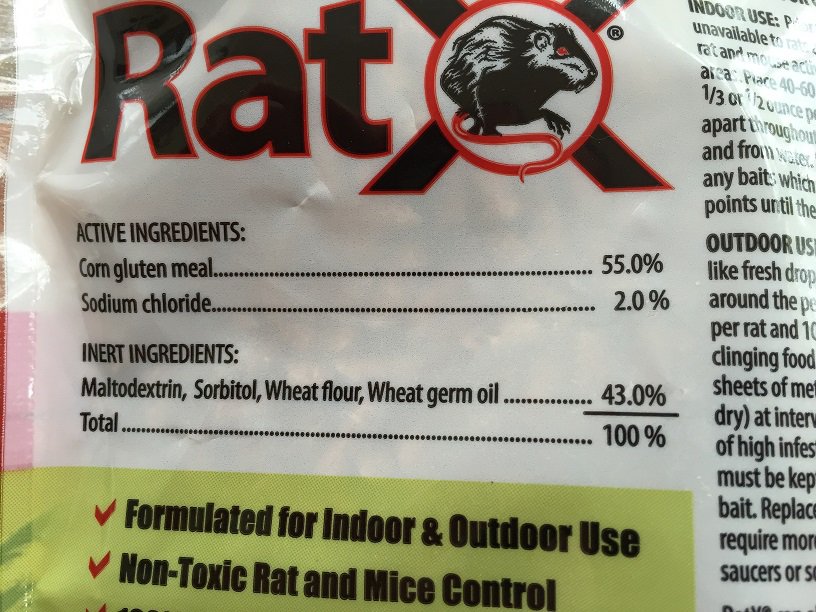
RatX does not always work but it is completely safe and stands a much better chance at killing the rats than any of the homemade options listed above.
Electric Rat Zapper
An electric rat trap is a great device.
Rat zappers are EASY to use, kill rats instantly and you never have to handle a dead rat.
There are two big advantages of using a zapper instead of poisons.
- You will KNOW if you are getting rid of mice & rats with a zapper instead of wondering if the poison worked.
- You can dispose of the dead rat instantly instead of searching for it a week later when it starts to stink 🙂


